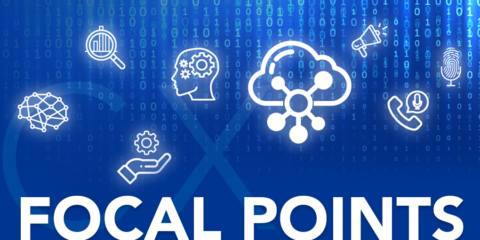Search
Contact Us
Your Biggest Contact Center Challenge? Figuring Out What Customers Are Telling You.
From digital natives to boomers. Anyone with a cell phone and an app, everyone expects more. Customers expect their time to be valued and that any interaction they have with your organization is efficient, leading them to their desired outcome. They also expect to be treated in a highly personalized manner.
Organizations are increasingly revisiting their operational investments with a focus on improving the customer experience (CX), hoping to minimize churn, grow revenue, and better position upsell and cross-sell initiatives while resolving specific customer issues, and meeting emerging needs. The analysis of the end-to-end Customer Journey through Voice of the Customer (VoC) programs, along with every call, email, text, or web chat, have become important elements in helping your organization properly focus those CX investments.
While these approaches collect large volumes of data, the missing piece of the puzzle is transforming it into actionable insights that benefit customers and the business alike.
Feedback can Easily be Misinterpreted Context is Key
Determining exactly what the customer comments relate to, along with how they fit into the flow of their experiences, becomes crucial. A comment made in a standalone or seemingly contradictory manner can be misleading – both positively and negatively.
With today’s ever-changing customer expectations, dynamic market realities, and aggressive competitors using new approaches, the onus is on organizations to quickly understand where they are successful and why, and where they fall short, and how.
But, just as importantly, organizations need to quickly maximize whatever advantages they have, while also eliminating any issues and shortcomings. Miscomprehension is dangerous as it can lead to misguided, improperly informed decision-making.
Extend Your Customer Data Gathering Capabilities
While most organizations seek to better understand their customers, the most valuable (i.e. unfiltered) comments are typically offered during a specific event or situation. Customers will tell you what matters when it matters most for them, but the reality is that there may have been more than one time that the customer has commented on something. Significant value comes from blending all customer comments for a holistic view of their experiences. This enables the organization to develop a more accurate profile of customer expectations, while also simplifying the identification of appropriate corrective action(s).
Significantly more value can then be extracted when all customer comments are aggregated, providing even more context while potentially identifying other underlying issues customers are experiencing, that might not be immediately apparent. Over time, insidious issues are the ones that have the most significant detrimental impact if ignored.
It’s the Approach that Matters
Artificial Intelligence (AI) has now become the most effective way to ensure that your organization can meet ever-changing customer expectations.
But…what kind of AI? What approach is best to implement and use it?
Artificial Intelligence Works When It Applies a Structured Process
The key when implementing an Artificial Intelligence (AI) platform is to ensure it analyzes the complete customer journey – from the first point of contact to the end. Whereas Surveys, NPS, and CSAT scores only give a partial picture, listening to the Voice of the Customer across voice, video, SMS, text, and social media, is imperative to developing the most complete understanding of the issues that the organization should be immediately acting on.
Specifically, the best results have been seen when using Conversational AI – which combines Natural Language Processing (NLP), Machine Learning (ML), and Text Analytics. The best typically also use continuously updated and optimized lexicon(s) of industry-specific terms, expressions, and phraseologies… (and if operating in a Consumer space, you might want to even consider using current expressions/slang/colloquialisms), to make sure your AI can accurately understand the spoken word (i.e. verbatims) within conversations, across all those communication channels.
In this way, the information AI has gathered can be better understood and it’s able to accurately interpret what has been said, how it is said, and then it extracts the appropriate “insights” from those conversations. These insights lead to a better understanding of the “why” behind the “what”.
Conversational AI can then provide a much more precise understanding of the interplay of all of the comments, issues, complaints, and corrective actions requested, and then recommend a course of action.
This is the ultimate benefit of using AI – it minimizes the guesswork and provides the detailed information needed to develop the best approach to eliminating recurring and/or similar issues in the future. For everyone.
Act on the Insight Gathered – Quickly
Once that insight has been extracted, validated, and refined (remember, speed is important here as customer expectations change quickly) it must be acted on when it matters most… when the customer expects it to be. Therefore, organizations must act with clear objectives and commitment.
AI Insights Lays Out How
Download our Artificial Intelligence eBook Listen. Understand. Act. to find out how AI can help your organization decipher what customers are saying so that you can fine-tune your Customer Experience (CX) the right way.
AI – it’s All in the Insights.
Learn How AI Helps Improve Your Customer Experience (CX) Through Better Use of Your Customer Data.
Published In
Microsoft Teams AI digital transformation Contact Center Enterprise Contact Center Service Provider Communications Center customer support CCaaS multi-tenant Unified Communications call handling quality management Avaya CTI Software compliance Virtualization Partners Integration & Optimization Cloud-Based Contact Center Zeacom Contact Center Solutions Microsoft Enghouse Interactive PCI DSS IVR/Self-Service call recording Cisco zz-General voice of the customer customer service speech analytics contact center optimization quality monitoring Contact Center Customer Experience Omni-Channel Video
Delivering Better Customer Experiences (CX)
For organizations to improve their overall customer experience (CX), they must focus on how they engage with their customers, by listening understanding, and acting on what customers are telling you, and by ensuring that you’re providing your staff (front-line, back-office, and support) with the tools they need act efficiently and effectively.
Continue Reading

How to Empower and Increase Agent Engagement with AI
Technology technology can make the workplace more appealing and interesting while enhancing performance. Many technologies can improve the overall agent experience, as always, starting with the basics has proven to be the best approach. Foundational technologies include delivering (and continuously optimizing) context-sensitive prompting in your IVR, integrating your contact center with your CRM to facilitate the development of first-party data, and implementing and enhancing knowledge management systems to improve your self-service capabilities.
Continue Reading
Thank you!
You have successfully subscribed to our newsletter.
Sign up here to watch your selected video as well as gain access to the other videos listed here
Sign up here to watch your selected video
Sign up here to watch the videos as well access to more Tips 'N' Tricks videos
Get your free download